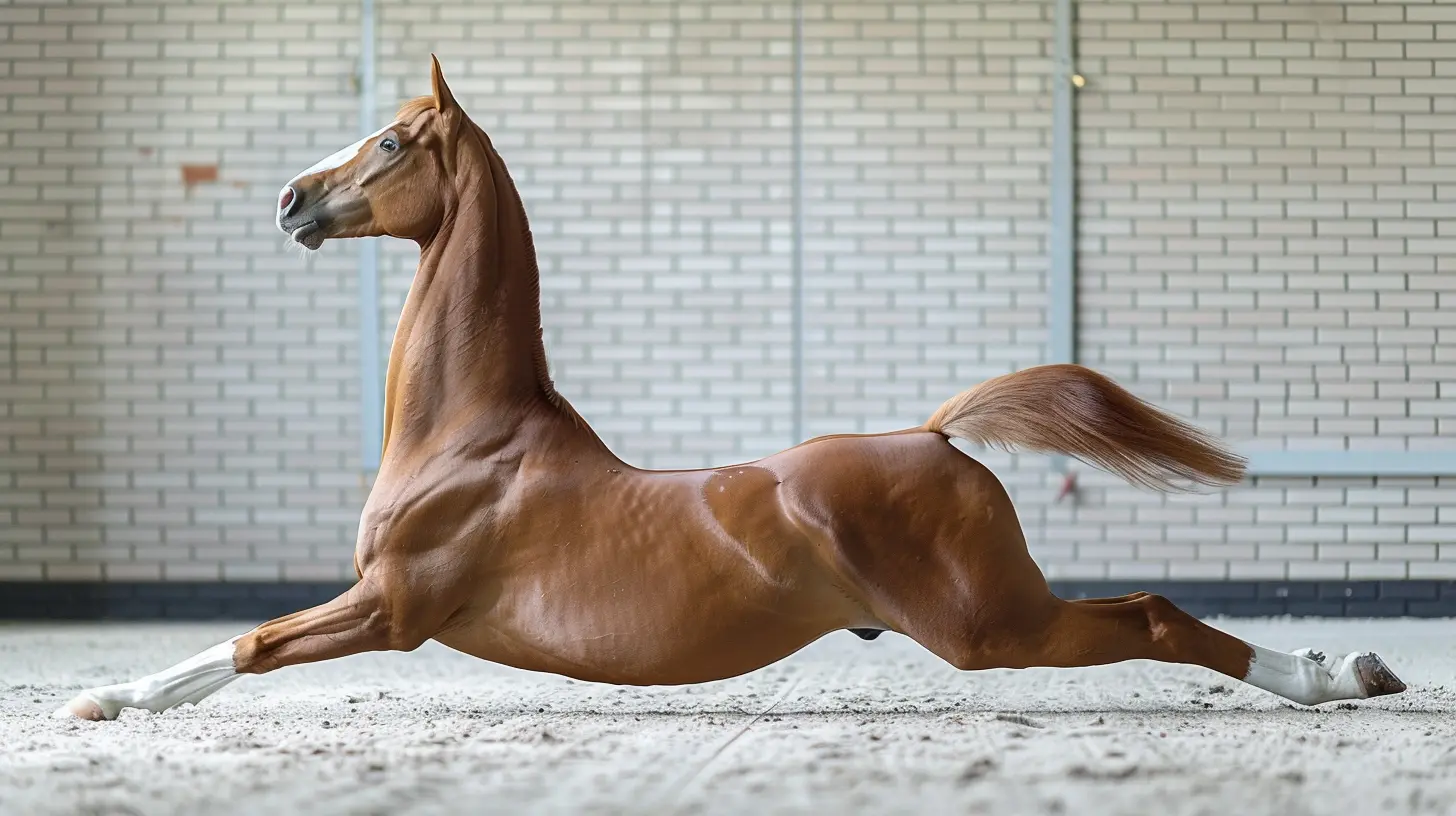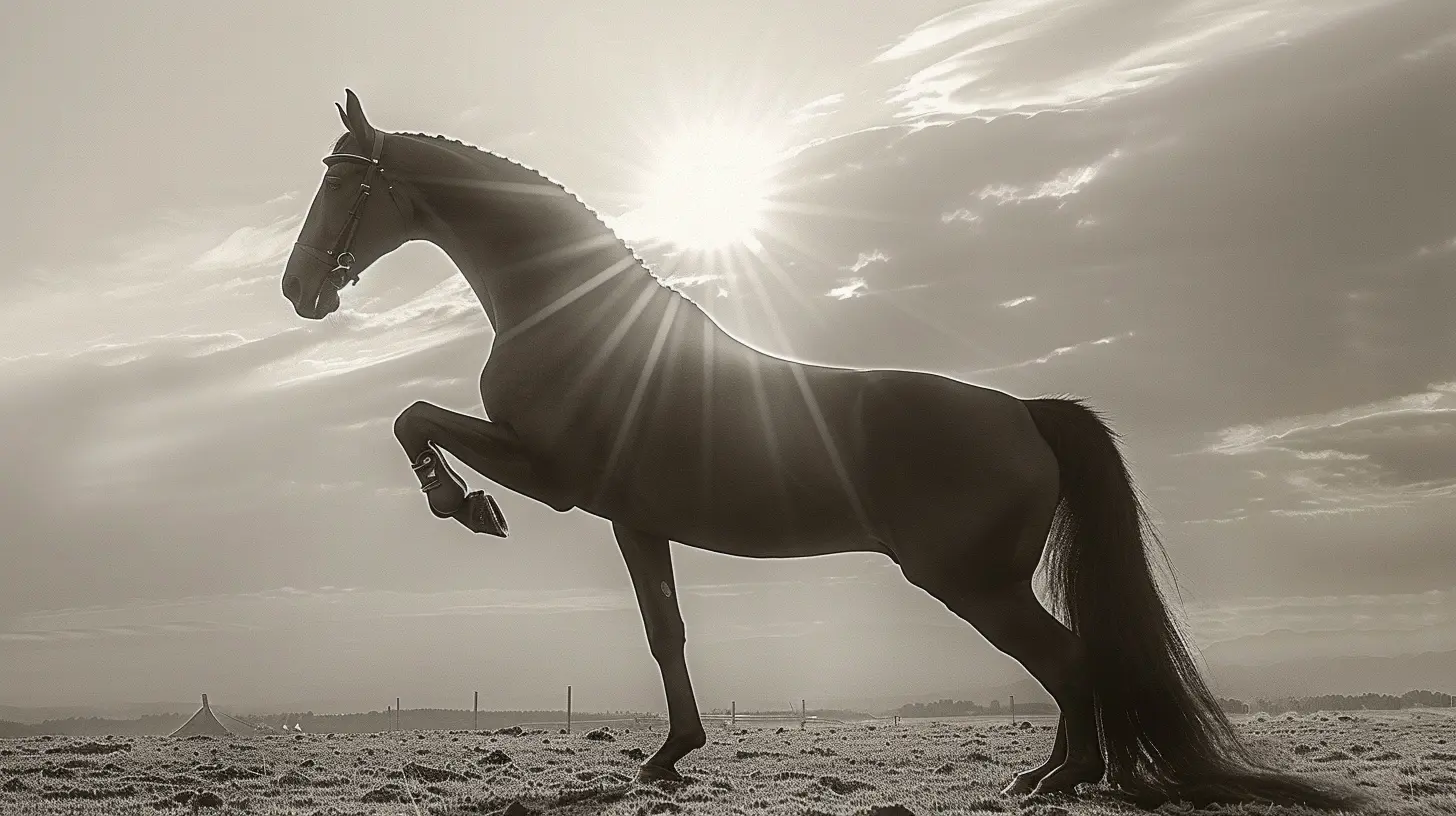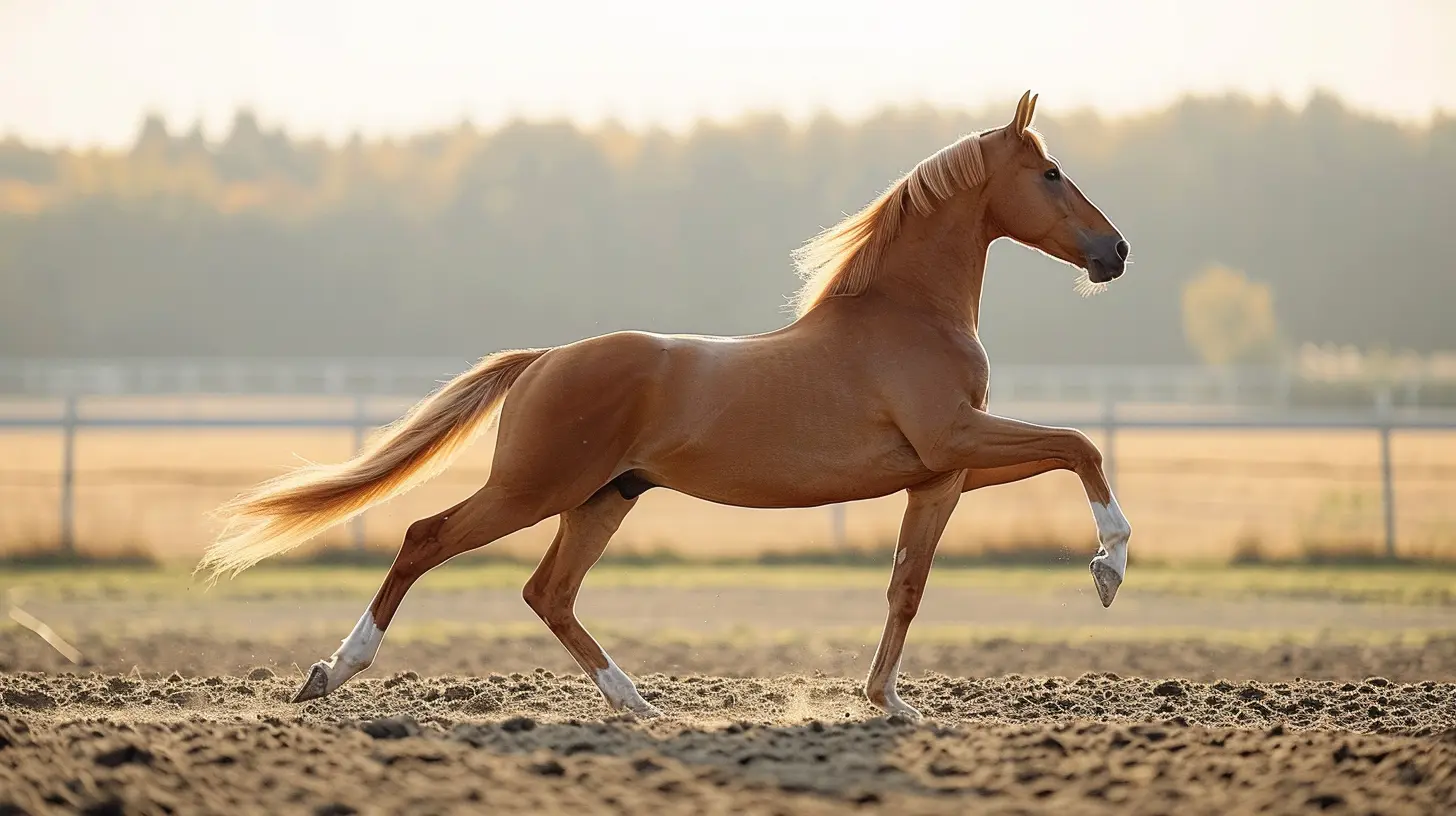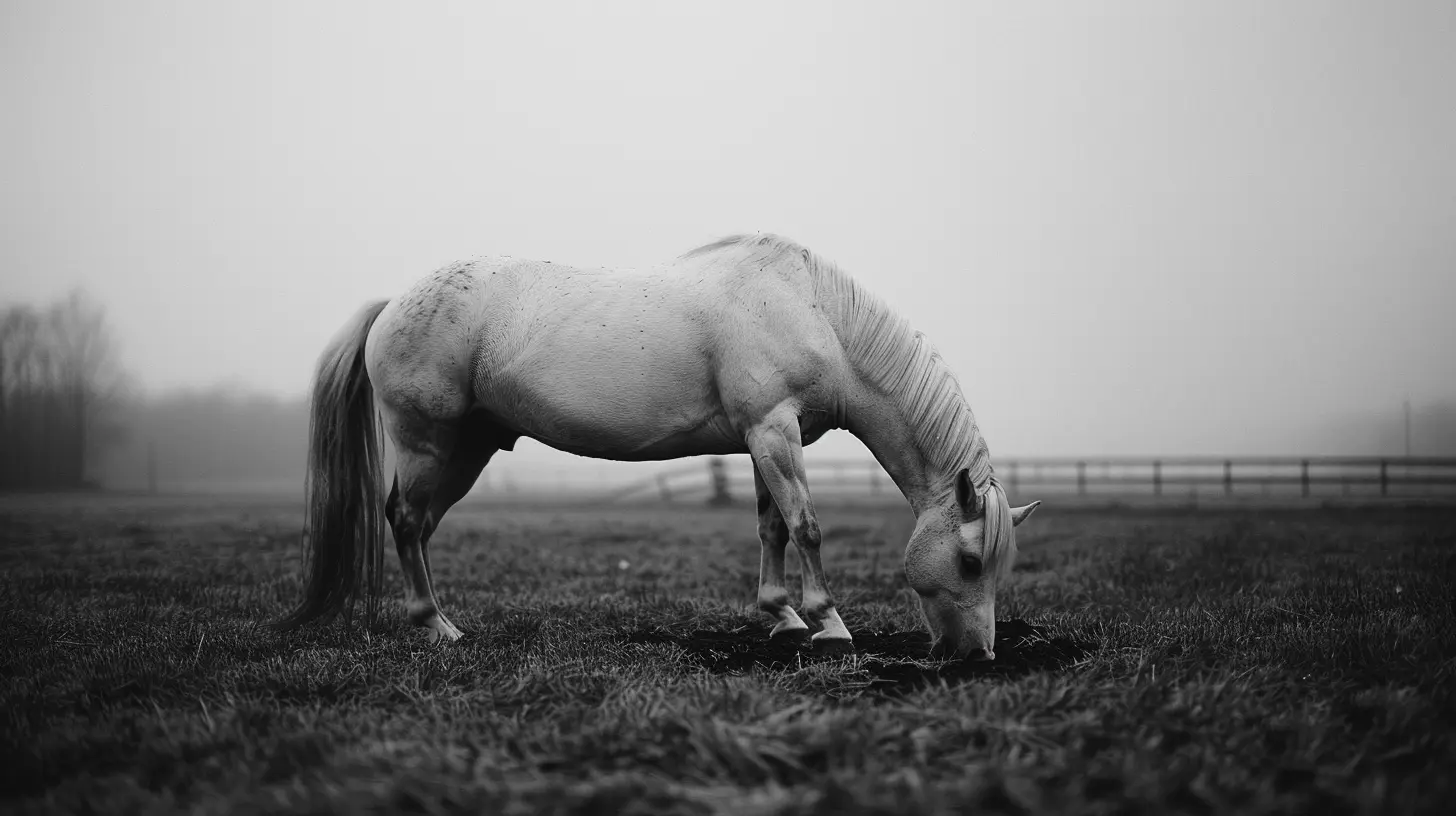Stretching for Equestrians: Improve Your Riding Posture
6 April 2025
Riding horses isn't just about technique and skill—it’s also about how well your body moves with the horse. Proper posture, flexibility, and balance play a massive role in your performance and comfort in the saddle. If you’ve ever felt stiff or sore after riding, it might be time to integrate stretching into your routine.
In this guide, we'll cover the best stretches for equestrians, why stretching is essential, and how it can dramatically improve your riding posture. 
Why Stretching Is Crucial for Equestrians
Riding a horse demands more from your body than many people realize. From maintaining a strong core to staying relaxed in the saddle, every part of your body is engaged. Without proper flexibility, you risk stiffness, discomfort, and even injury.Benefits of Stretching for Riders
1. Improves Posture – The more flexible you are, the easier it is to sit tall and maintain proper alignment in the saddle.2. Reduces Stiffness – Long hours in the saddle can take a toll on your hips, lower back, and shoulders. Stretching prevents soreness.
3. Enhances Balance and Control – A limber body allows better movement with the horse, improving your overall ride.
4. Prevents Injuries – Stretching helps keep muscles and joints healthy, reducing the risk of pulling a muscle or straining your back.
5. Boosts Riding Comfort – The more relaxed and supple your muscles are, the more natural and effortless riding feels.

Key Muscle Groups Riders Need to Stretch
Before diving into specific stretches, it's essential to know which muscle groups take the most strain while riding.- Hip Flexors – These muscles are constantly engaged during riding, making them prone to tightness.
- Lower Back – A stiff lower back can mess with your posture, leading to discomfort.
- Inner Thighs (Adductors) – These muscles help you grip the saddle and stabilize your position.
- Shoulders & Upper Back – A relaxed, open chest helps prevent hunching over the reins.
- Hamstrings & Calves – Tight legs affect your position and ability to use your aids effectively.
Now, let’s break down some of the best stretches for equestrians. 
Best Stretches to Improve Riding Posture
1. Hip Flexor Stretch
_Tight hip flexors can make it difficult to sit deep in the saddle. Loosen them up with this simple stretch._How to do it:
- Step one foot forward into a lunge position while keeping your back leg extended.
- Sink your hips forward and feel the stretch in your hip flexor.
- Hold for 30 seconds on each leg.
📝 Tip: Keep your chest up and avoid arching your lower back.
2. Seated Inner Thigh Stretch
_Your inner thighs work hard to keep you stable in the saddle, so they need regular stretching._How to do it:
- Sit on the floor with the soles of your feet together.
- Let your knees gently fall toward the ground.
- Lean slightly forward while keeping your back straight.
- Hold for 30 seconds.
📝 Tip: Don't force your knees down—let gravity do the work.
3. Cat-Cow Stretch (Spinal Flexibility)
_A flexible spine helps absorb movement and maintain a balanced seat._How to do it:
- Start in a tabletop position (hands and knees).
- Inhale as you arch your back, lifting your head and chest (Cow Pose).
- Exhale as you round your back and tuck your chin (Cat Pose).
- Repeat 8-10 times.
📝 Tip: Move slowly and focus on feeling the stretch in your spine.
4. Chest & Shoulder Stretch
_Opening up your chest helps prevent slouching and keeps your shoulders relaxed._How to do it:
- Stand tall and clasp your hands behind your back.
- Gently pull your hands back while squeezing your shoulder blades together.
- Hold for 20-30 seconds.
📝 Tip: Keep your shoulders down and avoid tensing your neck.
5. Hamstring Stretch
_Flexible hamstrings make it easier to maintain a correct seat and prevent tightness after long rides._How to do it:
- Stand with your feet hip-width apart.
- Hinge at your hips and reach for your toes (keep a slight bend in your knees if needed).
- Hold for 30 seconds.
📝 Tip: Focus on lengthening your spine rather than rounding your back.
6. Calf Stretch
_If you struggle with keeping your heels down while riding, tight calves might be the culprit._How to do it:
- Stand a few feet away from a wall and place your hands on it.
- Step one foot back and press your heel into the floor.
- Hold for 30 seconds and switch legs.
📝 Tip: Keep both feet pointing forward to maximize the stretch. 
How Often Should You Stretch?
The more consistent you are with stretching, the better your riding posture will become. Here’s a simple guideline:- Before riding: Spend 5-10 minutes doing dynamic stretches to warm up your muscles.
- After riding: Focus on deeper, static stretches to release tension and promote flexibility.
- On rest days: Dedicate 10-15 minutes to stretching, focusing on tight areas.
Additional Tips for Better Riding Posture
Stretching alone won’t instantly fix your posture, but combined with other habits, it can make a huge difference.✔️ Strengthen Your Core – A strong core stabilizes your position and improves balance. Try planks, leg lifts, and stability ball exercises.
✔️ Stay Hydrated – Dehydrated muscles become stiff and more prone to injury. Drink plenty of water throughout the day.
✔️ Check Your Saddle Fit – An improperly fitted saddle can throw off your posture and make riding uncomfortable.
✔️ Practice Mindful Riding – Pay attention to your posture while riding. Are you gripping too tight? Are your shoulders tense? Small adjustments can have a big impact.
Final Thoughts
Riding should feel fluid and effortless, not stiff and uncomfortable. By incorporating regular stretching into your routine, you’ll improve flexibility, reduce soreness, and enhance your overall riding posture.Start with just a few stretches daily, and soon, you’ll notice a positive change in how you move with your horse. After all, the more comfortable and balanced you are in the saddle, the better your horse will respond to you.
Happy riding!
all images in this post were generated using AI tools
Category:
StretchingAuthor:

Nelson Bryant
Discussion
rate this article
7 comments
Nyari Erickson
Great article! Stretching is essential for equestrians to enhance posture and overall performance. Your tips on flexibility will undoubtedly help riders connect better with their horses. Keep sharing this valuable knowledge—it’s inspiring to see how we can all improve through simple practices!
April 20, 2025 at 8:09 PM

Nelson Bryant
Thank you for your kind words! I'm glad you found the tips helpful for enhancing both posture and the rider-horse connection. Happy riding!
Elowen McGovern
Great tips for enhancing riding posture; very practical advice!
April 11, 2025 at 8:24 PM

Nelson Bryant
Thank you! I'm glad you found the tips helpful for improving your riding posture. Happy riding!
Zephyris McWilliams
Stretching is essential for equestrians aiming to enhance their riding posture. Not only does it improve flexibility, but it also fosters a deeper connection with your horse. Consistent stretching routines can significantly elevate performance and reduce injury risk. Prioritize your body; your riding will thank you!
April 10, 2025 at 6:40 PM

Nelson Bryant
Thank you for your insightful comment! I completely agree—stretching plays a crucial role in improving both rider performance and the bond with our horses.
Iliana Rios
Embrace the power of stretching! Elevate your riding posture and enhance your connection with your horse. Small changes lead to big improvements—let's ride towards our best selves together!
April 8, 2025 at 6:55 PM

Nelson Bryant
Absolutely! Embracing stretching can truly transform your riding experience, enhancing both posture and the bond with your horse. Let’s make those small changes together!
Joel McGivern
Great article! Stretching is essential for equestrians to enhance flexibility and balance, which leads to better riding posture. Incorporating targeted stretches can improve overall performance and comfort in the saddle, benefiting both horse and rider.
April 8, 2025 at 12:24 PM

Nelson Bryant
Thank you for your thoughtful comment! I'm glad you found the article helpful in highlighting the importance of stretching for equestrians. Happy riding!
Vivian Palmer
Stretching transcends physical enhancement; it cultivates mindfulness and balance, reflecting the harmony between rider and horse—an essential bond for mastery.
April 7, 2025 at 4:22 AM

Nelson Bryant
Thank you for your insightful comment! Indeed, stretching not only improves physical ability but also fosters a deeper connection between rider and horse.
Lyla Rodriguez
Incorporating targeted stretching into your routine can significantly enhance flexibility and posture for riders. Improved body awareness translates to better control and communication with your horse. Prioritize it!
April 6, 2025 at 8:42 PM

Nelson Bryant
Thank you for highlighting the importance of targeted stretching! Enhancing flexibility and body awareness is indeed crucial for better riding posture and communication with our horses.
MORE POSTS

Breaking Down the Kickflip: Tips and Tricks for Success

Dominating Possession: How Ball Control Won the Day

Rise Again: Unbelievable Comeback Journeys in Sports

The Role of the Playmaker in Dictating the Tempo

Maximizing Flexibility Through Daily Stretching

Turning Defeat Into Victory: Athletes Who Shattered Expectations